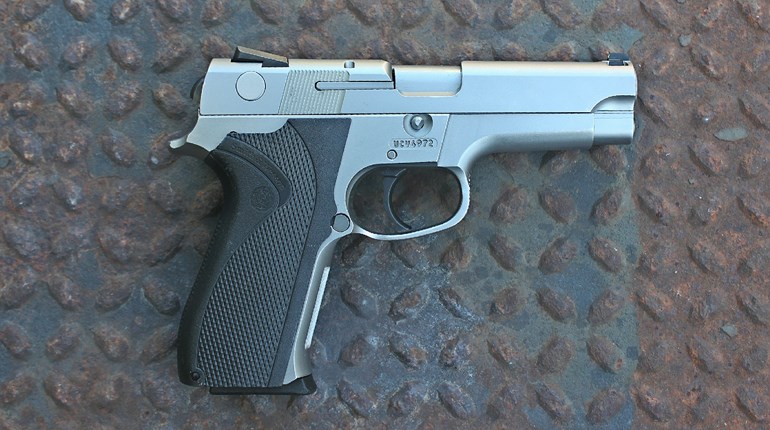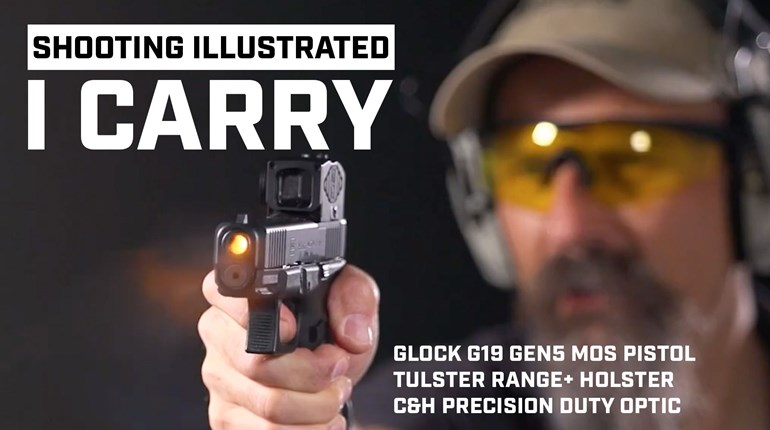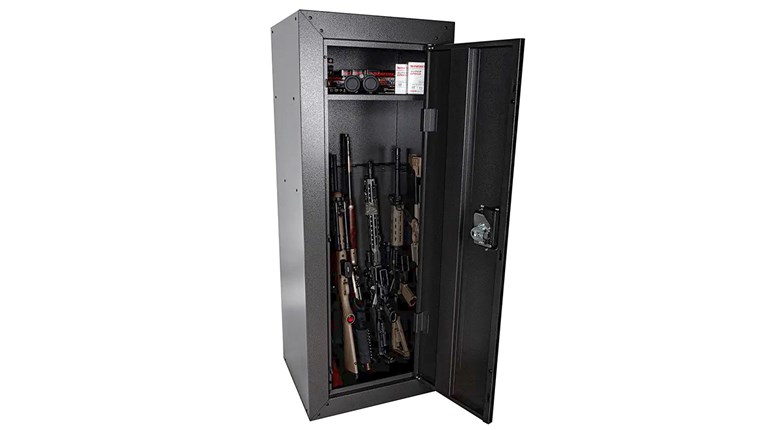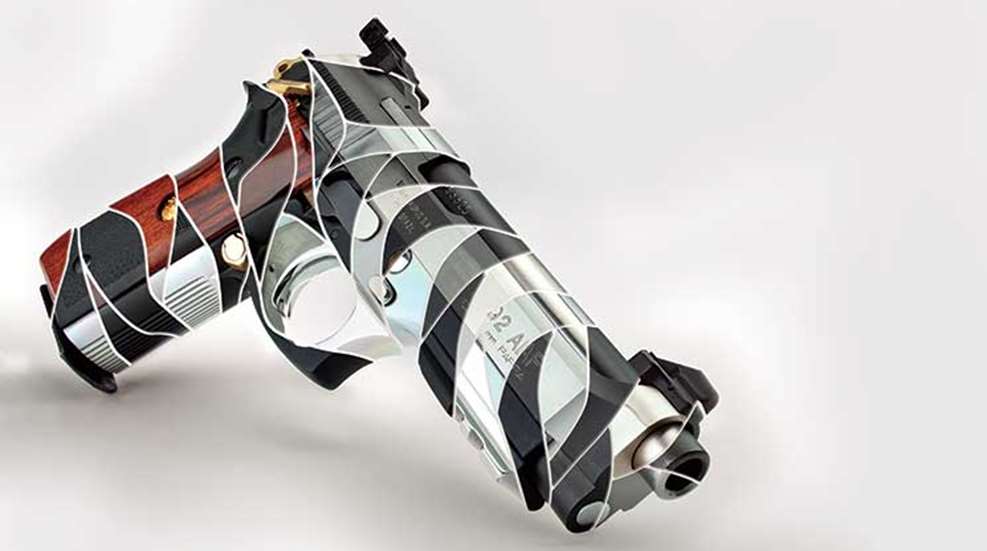
Because of the company's constant refinement, today's Taurus PT92 pistol and its siblings are deserving of another look.
With an instantly familiar visage, the Taurus PT92 series is representative of one of the most recognizable classes of handguns on the firearm market. Due to its well-earned reputation as a classic, however, it might be easy to forget how innovative the PT92 really is.
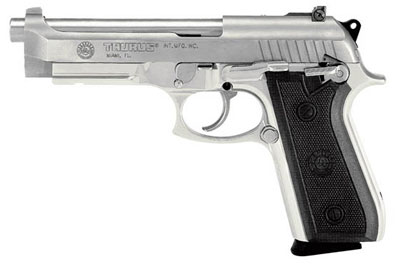
Part of the pistol's widespread recognition is likely due not only to its own popularity, but also to its familial connections to the Beretta Model 92 series. The Beretta's fame comes not only from the fact it is the basis for the longtime U.S. military standard-issue handgun—the M9—but also because it is the pistol of choice for numerous law enforcement entities in this country.On the other hand, the Taurus PT92 has certainly made its own headway in the U.S.—with its affordable price paving the way. As a result, the iconic design has been a recognizable staple among handgunners for nearly three decades.
Although the pistol may be considered somewhat traditionalist when compared to the polymer-framed, striker-fired designs so prevalent these days, the Taurus PT92 series is home to a broad range of unique and innovative advancements.
Equatorial Origins
Where does the story of the Taurus PT92 begin? The background is an interesting one, particularly for those who may be curious about its obvious similarities to the Beretta Model 92.
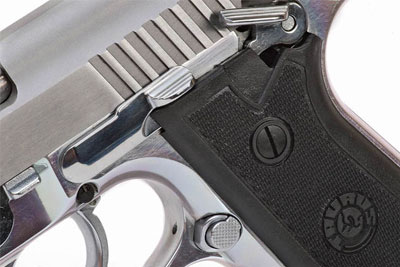
The original 9 mm Model 92 as introduced by the Italian company in the mid-1970s was an extremely modern handgun design for its day, featuring an increased-capacity, double-column magazine and traditional double-action system. This basically means the first shot with the hammer at rest is a long, relatively heavy trigger pull that cocks and releases the hammer. Subsequent shots are light, single-action pulls. Rearward slide movement cocks the hammer during reciprocation.
Marketing the pistol as an ideal military/law enforcement sidearm, Beretta made efforts to interest militaries around the world in the design. In 1977, the company was awarded a contract from the Brazilian military, with the nation placing a substantial order for its entire armed forces.
As is customary with military contracts, Beretta agreed to set up local production of the pistol in the country. The company already had a manufacturing facility in Sao Paulo that made versions of Beretta designs for the local market, so Beretta simply set up the necessary tooling to produce a variant of the Model 92 in Brazil.
When the Brazilian military contract was filled around 1980, Beretta had to decide what to do with the tooling and machinery located there. With no interest in shipping it all to Italy where the equipment would be redundant, Beretta faced a dilemma, and the solution would lead to the development of the Taurus PT92.
Forging Ahead
Recognizing a unique opportunity, a local firearms manufacturer stepped in and offered to buy the Sao Paulo plant. This company, Forjas Taurus, is the parent of Taurus International Manufacturing in Florida. Company officials traveled to Italy and made a deal to purchase the entire facility. Eventually, all the equipment to produce the Model 92-pattern pistol was moved from Sao Paulo to Taurus' production facility in Porto Alegre.
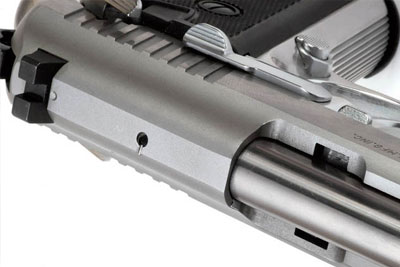
Taurus intended from the beginning to make the PT92 its own, building on the company's unique strengths. One of the most significant of these is indicated in the company's name, Forjas Taurus, which basically means forge of the mythological bull. All major firearm parts produced by Taurus are drop-hammer forged, resulting in extremely strong components. The company's Model 92-based series is no different, with its steel slide and aluminum-alloy frame receiving the same treatment.
Its drop-hammer-forged alloy frame is significant. In many cases during handgun production, alloy parts are built from extrusions that are much more affordable to make. However, Taurus' approach, which begins with a round aluminum bar heated and then drop-hammer forged into shape, theoretically results in a much stronger part.
Raging Bull
Once Taurus moved production to its facility, the company managed to build a complete pistol in just two weeks. The resulting pistols were dubbed the PT92 series, with the PT standing for "Pistola Taurus." Chambered in 9 mm, they were full-size pistols clearly related to the Beretta Model 92.
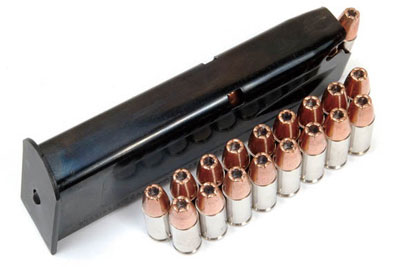
First introduced in the early 1980s, the new Taurus PT92 represented an outstanding deal—an established military-pattern pistol for an extremely affordable price. Although that first pistol would look very different to anyone familiar with the current PT92, it was quite similar in appearance to the existent Beretta Model 92. Specifically, it featured a rounded trigger guard, a non-ambidextrous, frame-mounted safety lever and a uniquely placed magazine-release button located at the bottom rear portion of the left side of the frame.
The location of the manual safety is significant to the story of the PT92. The earliest models featured a manual safety lever located at the rear of the frame, quite similar in operation and configuration to an M1911. Although well designed, it had no provision for decocking the hammer apart from easing it down by hand. An added feature of the safety system was it allowed shooters the option of carrying the pistol cocked and locked.
To enter its pistol in U.S. military trials in the early 1980s, Beretta was required to develop a decocking system into the safety of the Model 92. The company's answer was to move the safety from the frame onto the slide, setting it apart from the Taurus PT92.
The Best of Both Worlds
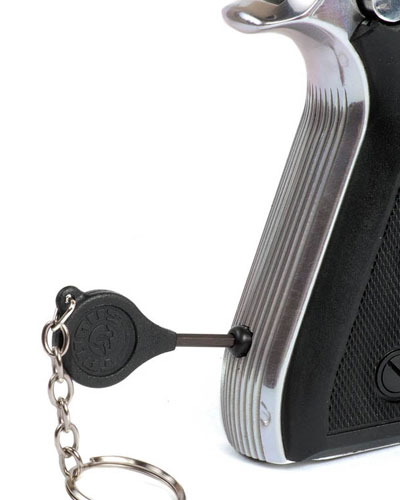
At the time the Beretta variant was modified for the decocking lever/safety system, Taurus decided to make some modifications of its own. It developed the PT99—an adjustable-sight-equipped variant of the PT92—featuring a squared-off trigger guard design and offered versions with a satin-nickel finish in addition to the standard matte-blue.
Shortly thereafter, Taurus modified the magazine-release button to a more traditional location behind the trigger guard as Beretta had done, and incorporated an ambidextrous safety system—but it still did not have a decocking function.
In the intervening years, however, Taurus recognized there were many customers who were uncomfortable with the pistol not having a system for dropping the hammer safely. As a result, in 1991 Taurus introduced an extremely innovative decocking safety system that seemed to offer the perfect solution.
This new system maintained the frame-mounted location of the Taurus PT92's safety, with an upward sweep putting the pistol on safe and a downward sweep readying it to fire. A third, lower position was added, allowing users to move the safety lever down farther, with an arc that swept into a recess cut in the upper-grip panels. In this position, the cocked hammer would safely drop to the at-rest position.
The result was an ambidextrous safety that maintained the appealing frame-mounted location of the original PT92 series and allowed users to carry the pistol with the hammer down as a traditional double action or cocked and locked like a 1911, with the additional ability to decock the hammer. In addition, the Taurus PT92 sports a passive firing-pin block safety.
Continuing the Tradition
Although the decocking safety system was one of the most significant Taurus innovations to the series, it was far from the only one. In addition to the inclusion of the popular stainless steel variant, Taurus adapted the platform to a popular new cartridge—the .40 S&W. These models were the PT100 with a fixed sights and the PT 101 with adjustable sights.
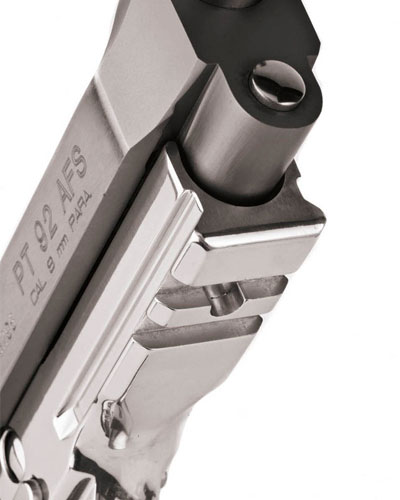
Further innovations included the Taurus Security System, a key system that locked the action of the pistol so the trigger could not be pulled and the slide couldn't be opened.Another significant change to the design, and one done at around the same time Beretta incorporated the same adaptation to its line of pistols, was the addition of an integral Picatinny rail machined into the frame's dustcover.
Radical Source
Even without Taurus' innovations to the design, the basic Taurus PT92 itself is unique from a mechanical standpoint, offering adaptations of sound engineering elements inspired by earlier revolutionary designs.
One of the most instantly recognizable features of the pistol, and an integral part of its iconic appearance, is the open slide and exposed barrel for which Beretta pistols have been known for decades. Whereas nearly all other center-fire semi-automatic designs feature a slide that encloses the majority of the barrel, the Taurus has a radically cut-away slide that reduces bulk and weight.
Another distinctive element of the PT92 series is its locking system. Inspired by the equally iconic Walther P38, the Taurus PT92 features a falling locking-block system. This system features a locking-block assembly fitted between two integral barrel lugs that moves up into engagement with the slide to lock it. The falling locking block is held in place under tension from the recoil-spring assembly, which sits against a recess in the bottom of the falling block. The tension from the recoil-spring assembly applies pressure against the lock to keep it up and in a locked position with the slide.
As the slide moves rearward under recoil, a pin within the rear barrel lug, behind the falling locking block, is pushed against the inside surface of the frame. This causes the pin to push forward against the locking block and move its twin lugs down and out of engagement with the slide. In its fully downward position, the twin lugs align with a raceway track inside the slide. Recoil continues to push the unlocked slide rearward to fully cycle the action.
A unique side effect of this system is, instead of a tilting barrel that unlocks in the traditional Browning style—with the rear of the barrel dropping down and out of engagement—the barrel remains in horizontal alignment with the slide as the lugs in the separate locking block drop down while the action cycles.
Straight to the Point
Although Taurus currently offers several variants based on the PT92 in a variety of chamberings, configurations and finishes, for testing I chose a relatively simple fixed-sight PT92 pistol dubbed the Model 92SS-17—a stainless steel variant in 9 mm.
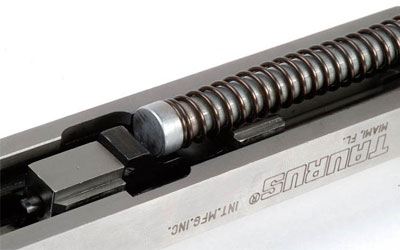
Current Taurus PT92 series pistols come with 17-round, flush-fitting magazines—two more rounds than earlier 15-round offerings.
Fit and finish was quite good, with bead-blasting applied to the slide complemented by subdued polishing on its flats. A high polish was applied to the aluminum-alloy frame. The rear sight sits in a dovetail groove and features two white dots. The front sight is integral with the slide and features an orange dot. I noted some rough milling marks on the Picatinny rail, but that is my only criticism.
Over the course of testing, I fired hundreds of rounds with no malfunctions. Accuracy was quite good, particularly with the Black Hills load. As with all PT92s, as well as Beretta Model 92-series pistols, the ergonomics of the handgun were exceptional. Perceived recoil was light and muzzle flip was very manageable.
All controls performed smoothly and as advertised, with the ambidextrous safety/decocking system working well and magazines seating firmly and positively. The magazine-release button can be reversed quite easily for southpaw use. Also, the pistol does not feature a magazine disconnect, enabling the pistol to be fired without a magazine inserted.
A Classic Revisited
Sure, there are a lot of terrific, ultra-modern, polymer-framed pistols out there. In fact, Taurus offers a broad line of this type of handgun. How-ever, as is often the case, classics are considered classics for a reason. The many appealing characteristics of the Taurus PT92 series, combined with Taurus' modern-day enhancements, make it well worth a second look.
Manufacturer: Forjas Taurus
Importer: Taurus; (305) 624-1115, www.taurususa.com
Type: Recoil-operated, semi-automatic
Caliber: 9 mm
Capacity: 17+1
Frame: Forged aluminum alloy
Barrel Length: 5 inches
Rifling: 6 grooves; 1:9.75-inch RH twist
Sights: Three dot; drift-adjustable rear
Trigger Pull Weight: 9.75 pounds (double-action); 6 pounds (single-action)
Length: 8.75 inches
Width: 1.5 inches
Height: 5.5 inches
Weight: 34 ounces
Accessories: Two magazines, cleaning brush, two Taurus Security System keys, manual
MSRP: $653.32













